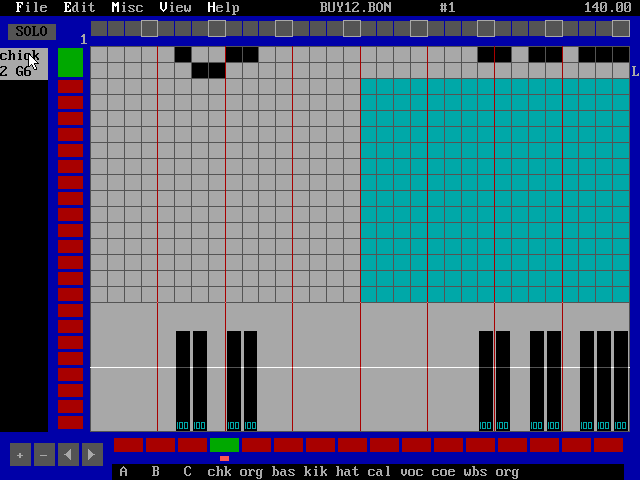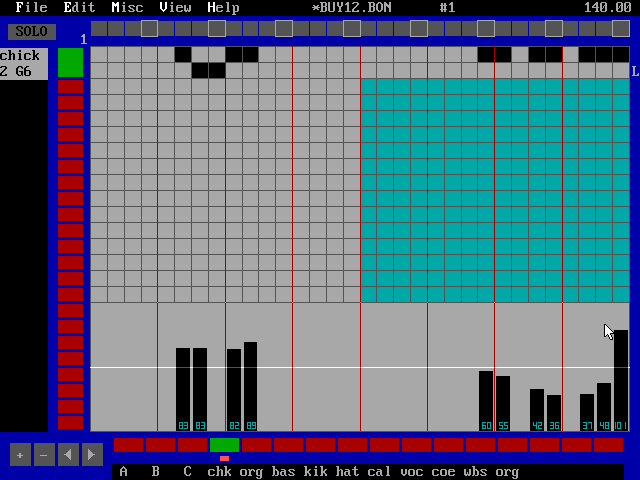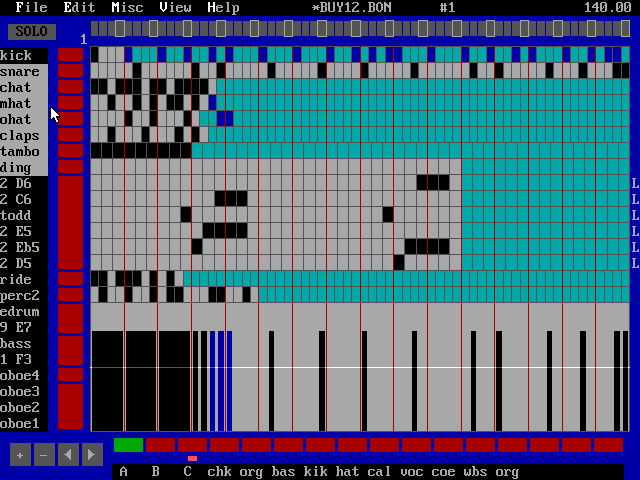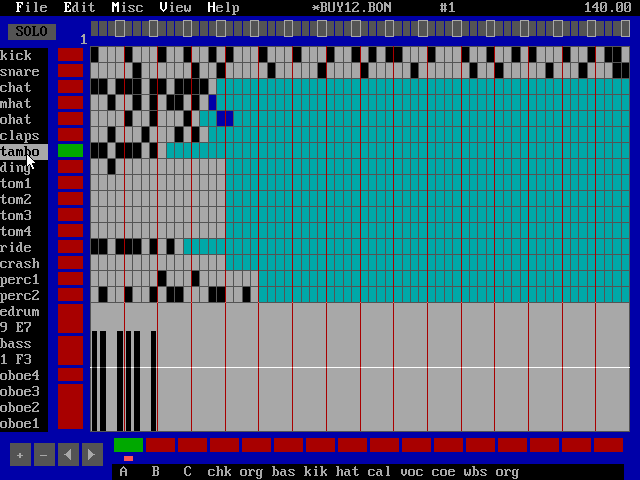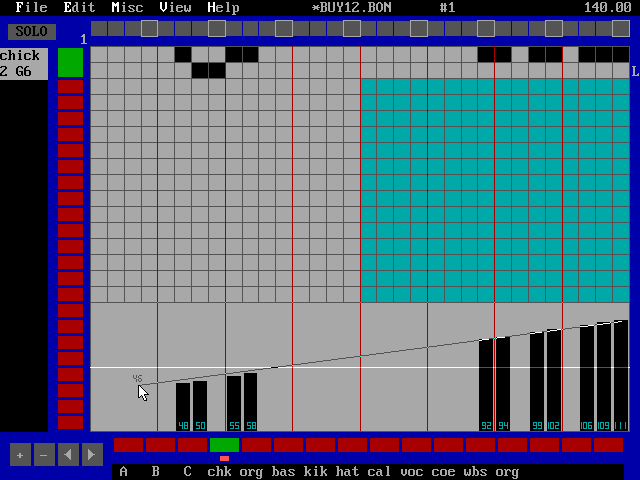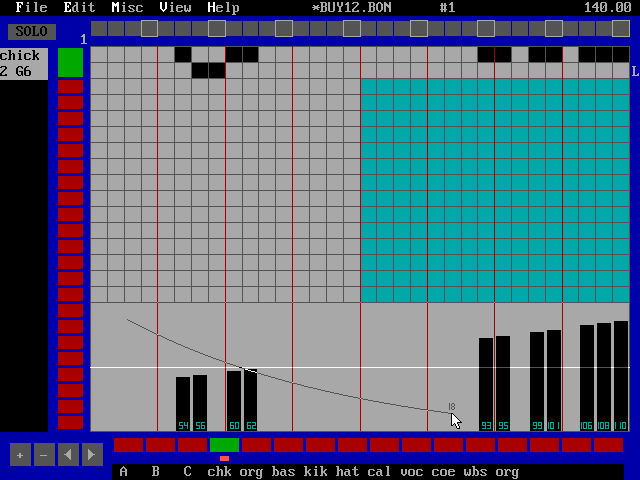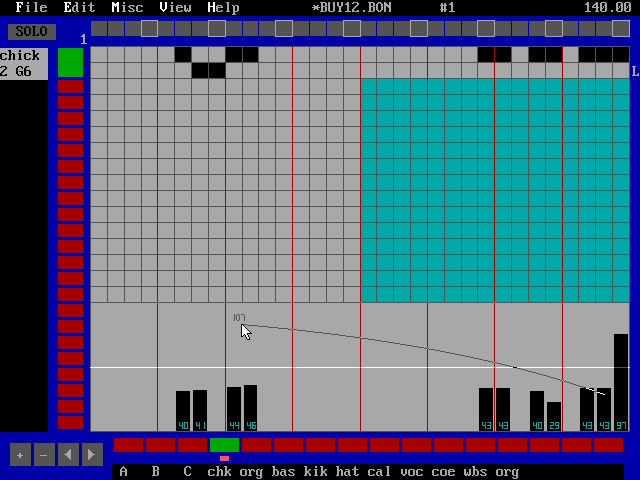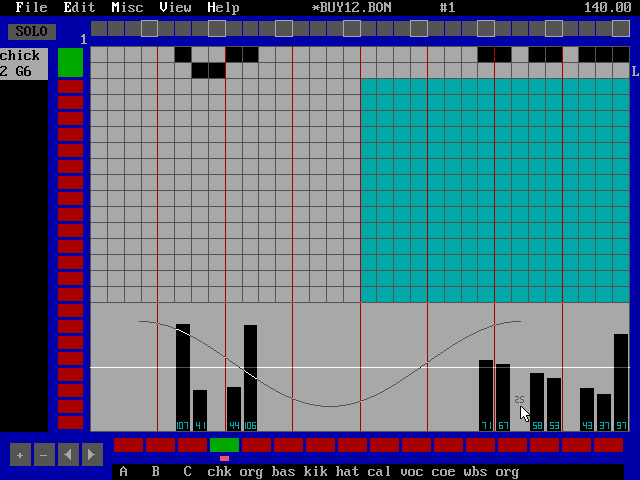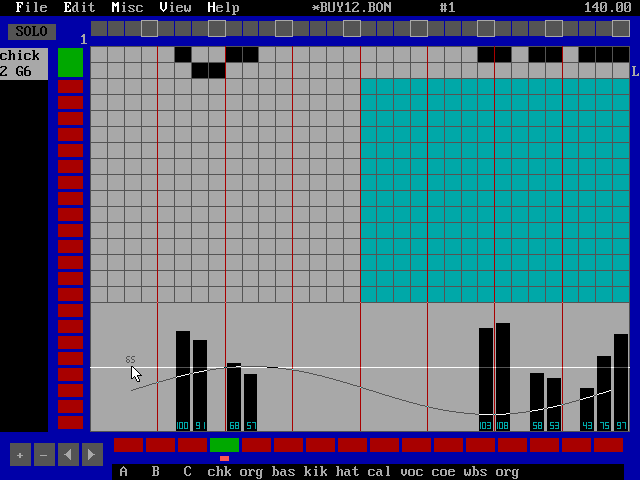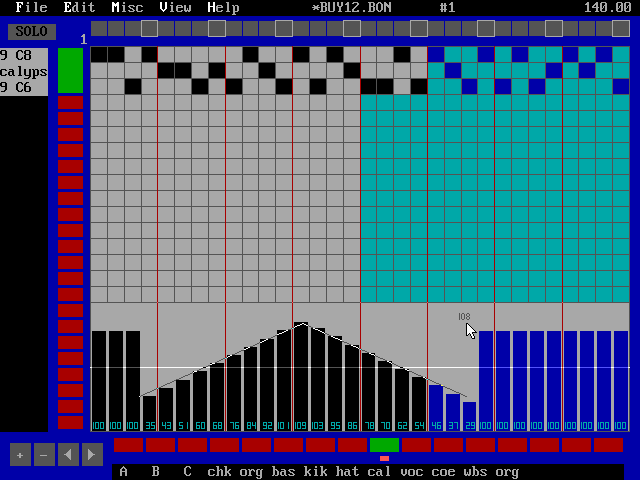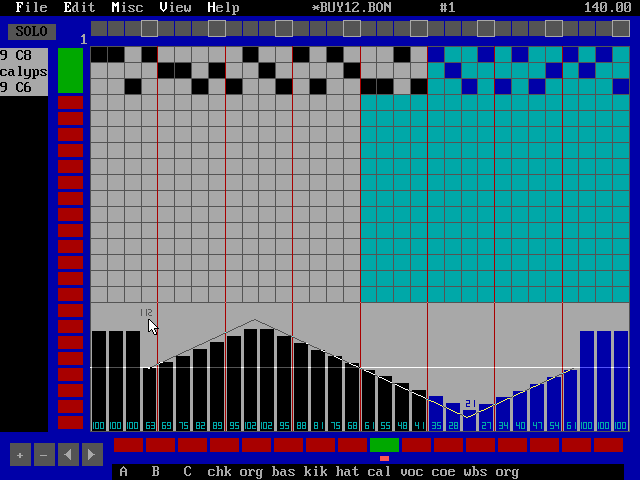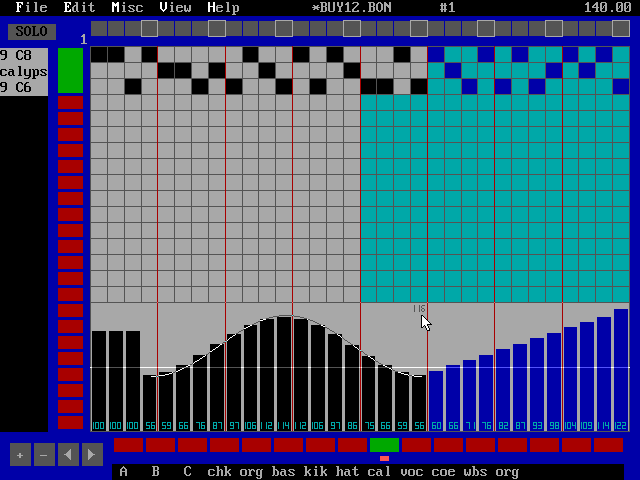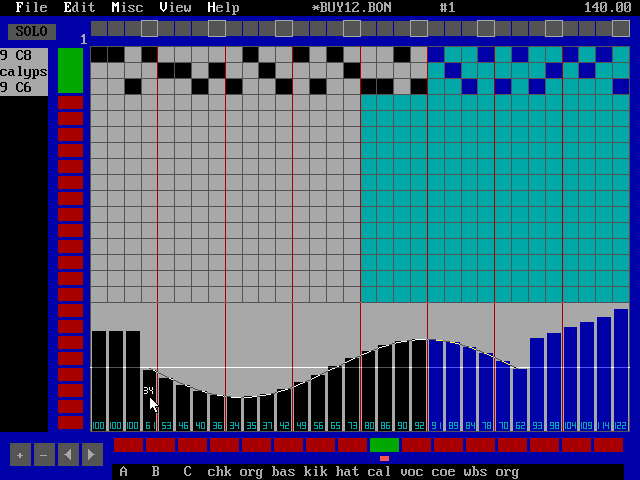Bongo was a polymeter-oriented sequencer that I developed in 1998. I used it to compose some of the tracks on Six Billion Humans Can't Be Wrong (including "Buy", "Buy More", and "Stencil") and nearly all of the tracks on The Man of the Future. Bongo allowed me to explore complex polymeter as a technique for creating variation in music. The program became more sophisticated over time and increasingly revolutionized my understanding of rhythm. There was nothing like Bongo in 1998, and even today there's nothing like it. That's why I recreated and modernized it, using these screenshots as a starting point. Bongo cooperated with two other MIDI programs I created (Jock and Stencil) to form a complete music production workflow, all of which is now integrated into the Polymeter MIDI Sequencer.
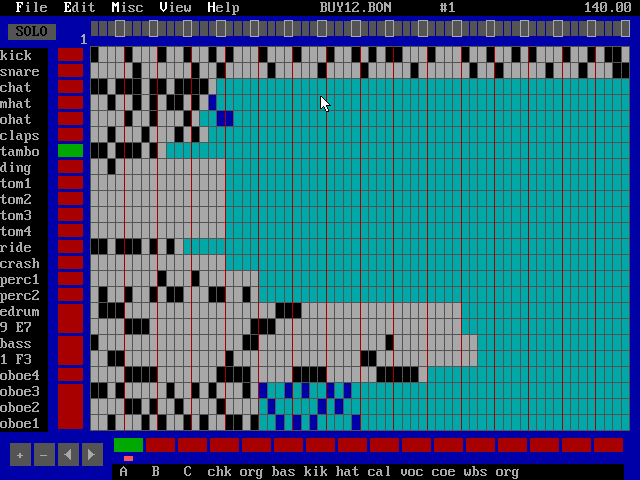
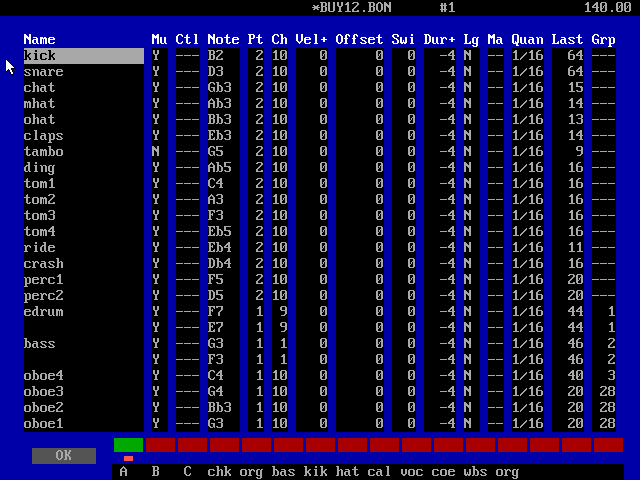
I wrote Bongo in C under DOS for the 386 (16-bit). I wrote my own mouse, menu, and dialog support, and developed custom interrupt routines for a specific MIDI card, the manufacturer of which disappeared long ago. The user interface was state of the art for its time, and modeled on DOS Cakewalk, which was the only sequencer I ever found that made it easy to have loops of different lengths, though still nowhere easy enough.
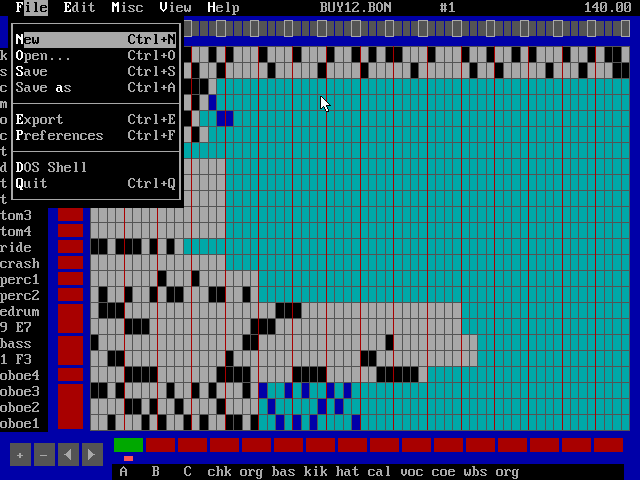
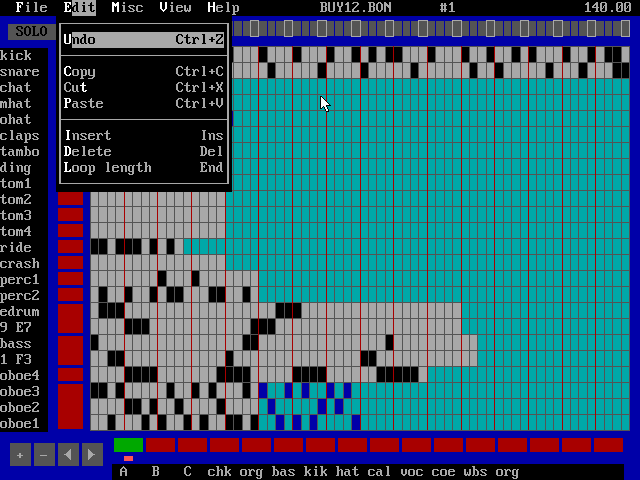
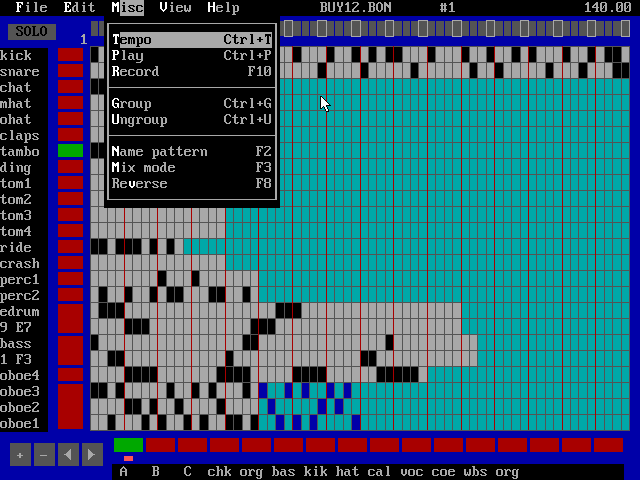
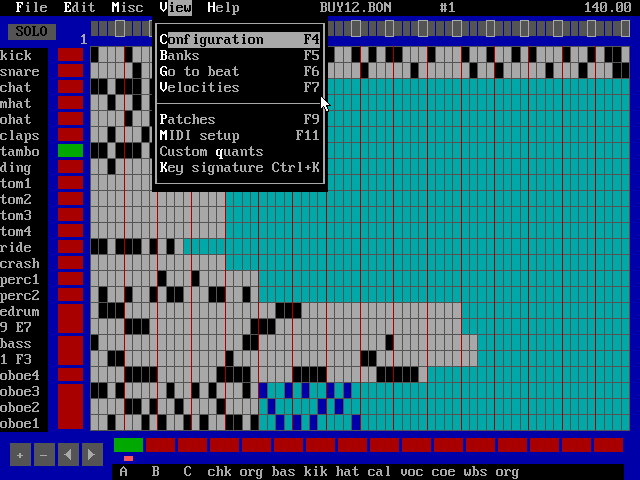
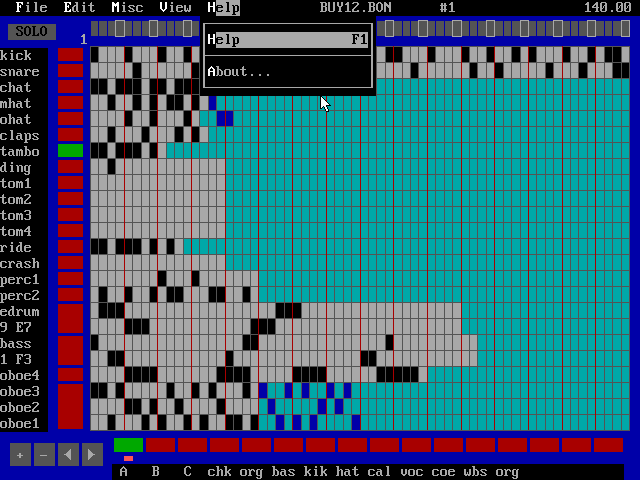
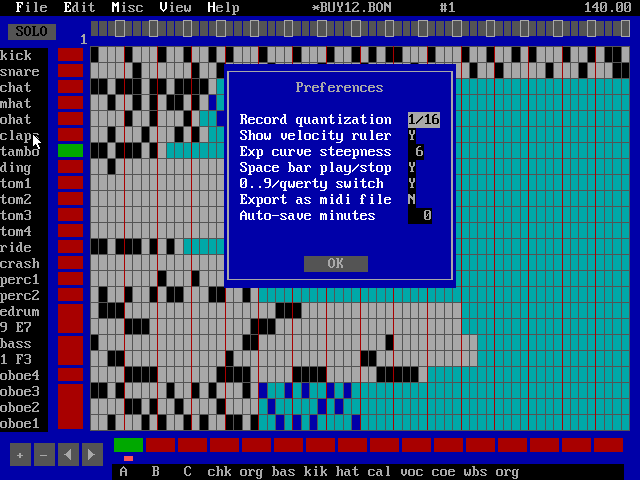
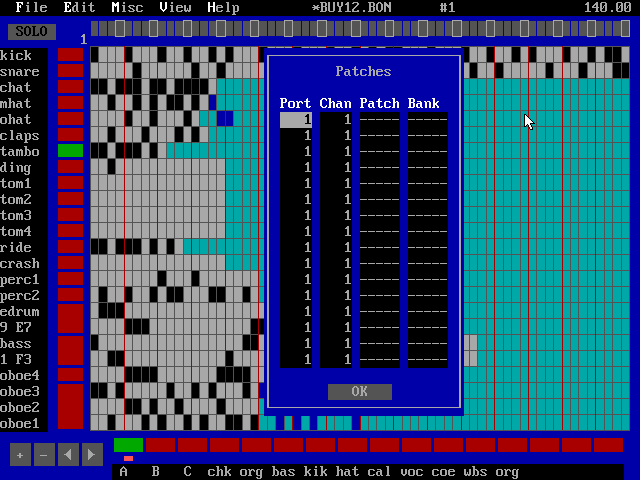
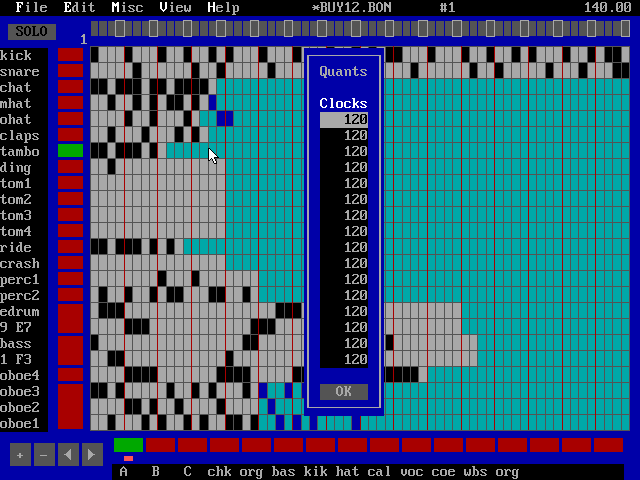
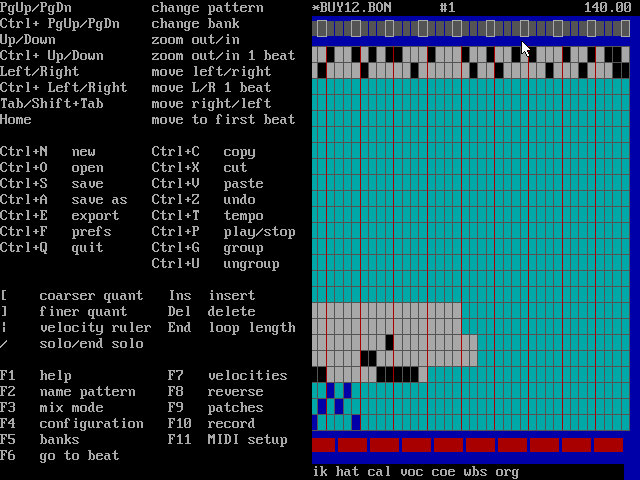
Bongo supported 16 banks, each containing 16 pages of 24 tracks each. Notice the bank and page switching, track grouping, and rectangular selection.
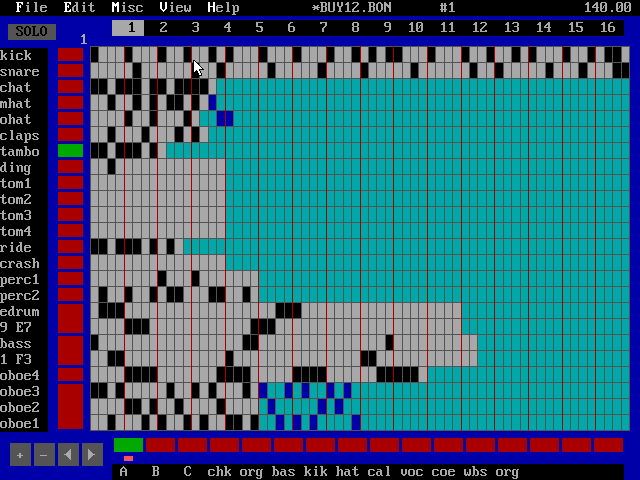
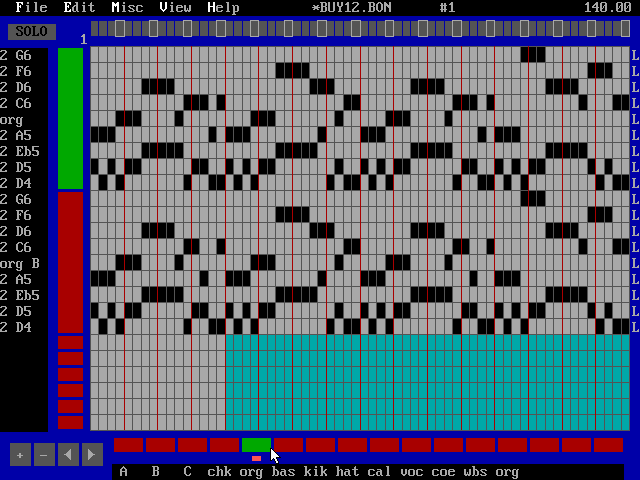
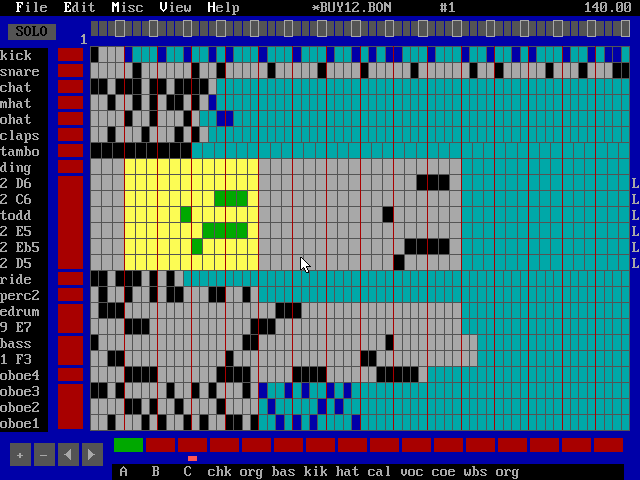
Bongo had excellent support for velocity and continuous controller editing, including various periodic functions and exponential curves.
